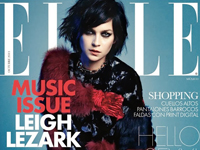
by Alejandro Jassan
There was once a time when an artist was limited to local influence, but thanks to technological developments, an artist can be inspired by what is beyond our reach, like the moon. Such is the case of this Korean artist, who creates his sculptures by hand. His work is unique in the way that he uses traditional techniques to create a discourse of modernity and globalization in artwork that seems out of this world.
Historically, the mulberry tree is a tree native to Korea that played a very important role in everyday life during the Joseon period (1392-1910). The Joseon dynasty manufactured a very resistant translucent paper from the mulberry tree, which was used to imprint or wrap. In the 1950s, mulberry paper was essential in the work of the home; used for packaging fish, beans, soy, egg, mushrooms and roots. It was also very useful for wrapping metal tools, and was an excellent construction material in building walls, doors and even details on the floors. The cost of mulberry paper was very low and the material had countless benefits.
As a child, Kwang Young Chun enjoyed watching his uncle, who owned a pharmacy, wrap herbs and medicines in small individual packets made of mulberry paper. His uncle would then hang them from the ceiling, keeping the insects away. The multi-sensory experience of small suspended wrappings, each with different density and size, as well as the combination of odors resulting from so many different herbs, left a great impression on Chun.
Today the paper mulberry succumbs to the technology, which has facilitated communication, thus replacing letters with emails, tangible poems of love for texting, and the physical presence of paper for touchscreens. Young people, throughout Korea, America, and Europe, have opted for electronic media. Very few members of the new generation remember the importance of mulberry paper in everyday life.
The fate of mulberry paper has been a very reoccuring theme in Chun’s work, and the material is used as the primary resource to wrap hundreds or thousands of pieces of wedge-shaped polystyrene sponges. Later, each of the small pieces are superimposed as tiny bricks on a panel or on a three-dimensional structure until every inch is covered.
Chun’s working process is very hands on, and each one of his works requires meticulous planning and patience. Although most of the pieces display the natural gray color of paper, his most recent sculptures include accents of color. The result is a “rocky” surface so imposing that it makes the viewer question if what you see is actually made of something as light as paper. This technique belongs to a series of similar works called Aggregation, which quickly became the most representative of Chun’s work. “When I started with Aggregation in 1980, I wanted to express and promote the spirit of Korean traditions through the use of mulberry paper, which was a native element present in every Korean household,” said Chun in an interview in his studio on the outskirts of Seoul. “Then, in 2004, my work began to simulate lunar landscapes and dry deserts, because I wanted to express my anger and criticism of modern society and how it is destroying the environment.”
Chun represents the juxtaposition of nature and tradition, and civilization and globalization. The mulberry paper represents nature and the Korean spirit, while the characters inscribed on the paper represent the culture. However, to fully appreciate Chun’s work, it is important to see beyond the physical elements and really try to understand the relationship that the artist makes between our planet and the universe that surrounds it. It is a dialogue between the traditional and the modern, and the yearning for the unknown. Chun takes us to outer space with surfaces moles, craters and meteors. It is a feeling of the greatness of the unattainable and sublime, through elements as small as we are on the planet. The enormity of each “aggregation” within a gallery generates a sense of curiosity, or even threat. The works raise the viewer’s awareness of where they are located in the space, in relation to the pieces. Instead of developing a work to raise awareness in ourselves and future generations, Chun provides a critique about our behavior with the planet. He argues that instead of advancing our civilization, we are slowly headed in reverse towards a black hole.
Kwang Young Chun is represented by the contemporary art gallery, Hasted Kraeutler, in New York.